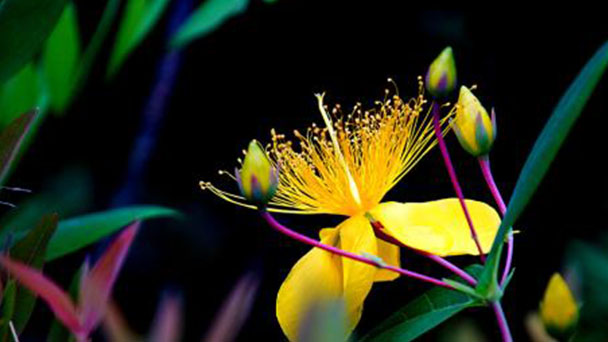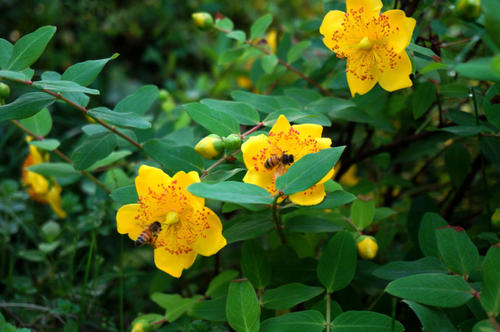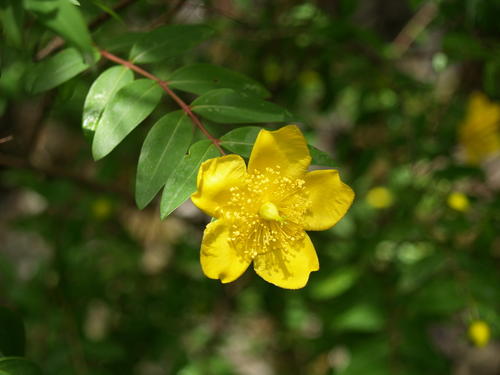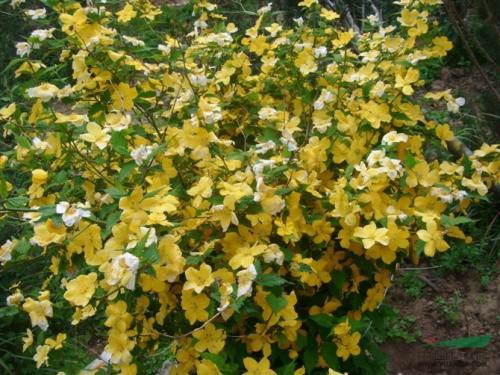How to grow and care for St. Johns wort
Written by Maggie
Jan 18 2021

St. John's Wort is a common plant in the fields and countryside. In recent years, it has been loved by flower friends. It is a very good-looking flower watching plant when it is transplanted to the balcony or garden of the flower bed at home. Then how to grow St. John's Wort? How to care for St. John's Wort when we grow it? Let's look together.

Growing St. John's Wort in the pot
As a potted plant, St. John's Wort needs to be pruned before planting, watered every 3 days during the growing process, and watered every 15 to 20 days in winter. In autumn, organic fertilizer should be applied to help St. John's Wort survive the winter. In spring, over-long and diseased branches can be pruned. The following are how to grow St. John's Wort in the pot.
1. Trim the root system
St. John's wort is a plant with high decorative ability, and its tall and luxuriant foliage has become an indispensable ornamental plant in daily life. Many flower friends are still not clear about how to potted St. John's wort. Before potting St. John's wort, the root system should be pruned to remove the rotting locations, and the root system should be in close contact with the soil.
2. Watering is appropriate
St. John's wort needs to consume a lot of water when the spring germination point opens, and it needs to be watered every 3 days or so. In summer, the water evaporates and is watered quickly. At this time, the water can be watered once in the morning every day.
3. Reasonable top dressing
St. John 's wort after entering autumn can apply organic fertilizer, would impose around the roots of its location, water and dissolved it, st. John' s wort absorbs enough nutrients to ensure safety over the winter. The other seasons but no topdressing fertilizer, especially in the flowering, if applying fertilizer is easy to cause to develop healthy branches, affect the overall aesthetic effect.
4. Pruning
As a pot culture, St. John's Wort must be pruned. The best time for pruning is in the spring, when the germination of the plant is the strongest. Sick and over-long branches can be pruned, and heavy pruning is mainly used during the growth period to make the plant more beautiful and compact and improve the ornamental ability.
St. John's Wort care for growing excessively
St. John 's wort grows excessively, branches should be timely to be truncated, shortened the length can be according to the short shoot around. After trimming, do not apply fertilizer. In the peak season the water that cleans out rice water is the root. Indoor farming must assure about six hours of sunlight. THe following are St. John's Wort care for growing excessively.
1. Trim long branches
When we care for growing excessively, what should St. John's Wort when the branches grow excessively? If the branches grow barren, the overall beauty will be affected. The over-long branches will block the light, resulting in uneven illumination.
2. Wash rice water irrigation
St. John's wort must not be fertilized after the pruning is completed, otherwise excess nutrition will lead to the phenomenon of excessive growth of branches again. In the period of vigorous growth of rice water irrigation around the root system, supplementing the scarce nutrients, that is, can promote plant growth, will not cause the situation of excessive growth.

3. Filling light processing
As a pot culture, St. John's wort is easy to cause overgrowth, which is caused by insufficient or long-term lack of light. Therefore, it is necessary to make up for light when indoor culture, and place the wort in a light environment with astigmatism irradiation for more than 6 hours. In summer culture, shading treatment is required.
4. Reasonable watering
When we care for growing excessively, not only do we need to give light and nutrients, water at the same time also needs to be reasonable. If the water phenomenon in a bowl, it will affect the root uptake of nutrients and moisture, moderate growth, etc., lead to uneven growth of branches and so dairy farming should be carried out according to the principle of see dry wet water.
St. John 's wort care for pests and diseases prevention
Aphids
Aphids are one of the common insect pests in St. John's Wort. Such insect pests are very harmful. During the onset of the disease, the leaves will gradually curl and wither until the plants wither and die.
Scale insects
Scale insects and st. John 's wort suffering one of the most pests, once the onset time, will gradually appear brown spots, the plant leaf blade will slowly yellowing of fall off, in the early days of the time will be best source eradication, clipped disease areas concentrated destruction of spray right amount carbendazim solution for prevention and control.
Strengthen ventilation
The growth of St. John's wort has high requirements on the environment, especially in the high temperature and high humidity environment. The plants are prone to the harm of diseases and insects. During the growth period, air circulation can be often strengthened, doors and windows can be often opened to facilitate ventilation, and indoor storage should not be placed in a closed environment for too long in winter.
Reasonable trim
Proper pruning can help St. John's Wort grow more profusely. Cut off unwanted and diseased branches from the base during peak growing season to promote plant growth and development. Also, disinfect the soil frequently to prevent bacterial buildup.

Latest Updated
- Benefits of Bugleweed - 7 Science-backed Health Benefits
- Bugleweed Dangers & Side Effects - Is It Poisonous?
- How to Plant Evergreen Trees - What You Should Know
- When to Plant Evergreens - Grow Guide for Evergreen Trees
- 12 Wonderful Evergreen Shrubs for Your Garden
- 12 Popular Evergreen Plants with Pictures for Beginners
- When And How To Prune A Lilac Bush Like a Pro
- How to Grow & Care for Lilac Vine (Hardenbergia Violacea)
- Japanese Lilac Tree (Syringa Reticulata) Care & Propagation Guide
- Shumard Oak Pros and Cons - What to Know
Popular Articles
- Winter maintenance of Antirrhinum Majus
- How to Grow Terminalia Mantaly Tree
- How to Grow and Care for Crossostephium Chinense
- How to grow Antirrhinum Majus in spring
- Peristeria Elata (Dove Orchid) Profile: Info & Care Guide
- Underwatered Snake Plant (Sansevieria Trifasciata) - Signs And How To Fix
- How to Care for Brazilian Jasmine Plant (Mandevilla Sanderi)
- How to Grow & Care for Graptopetalum Purple Delight in Summer
- Rosa Chinensis (China Rose): Plant Growing & Care Tips
- How to Care for Baby Sun Rose (Aptenia Cordifolia)